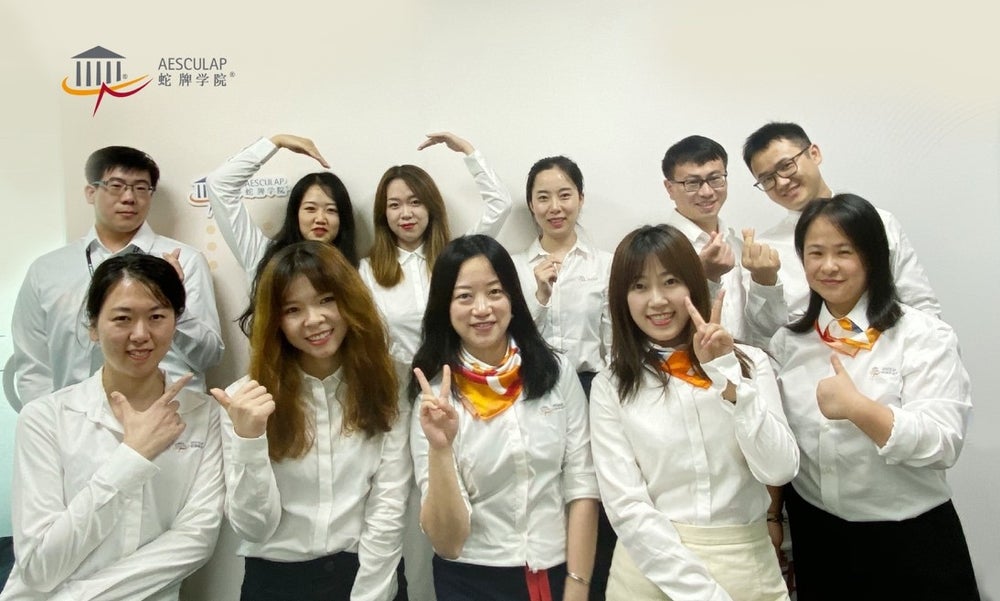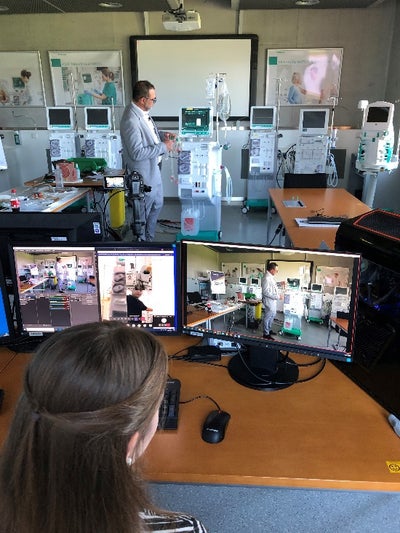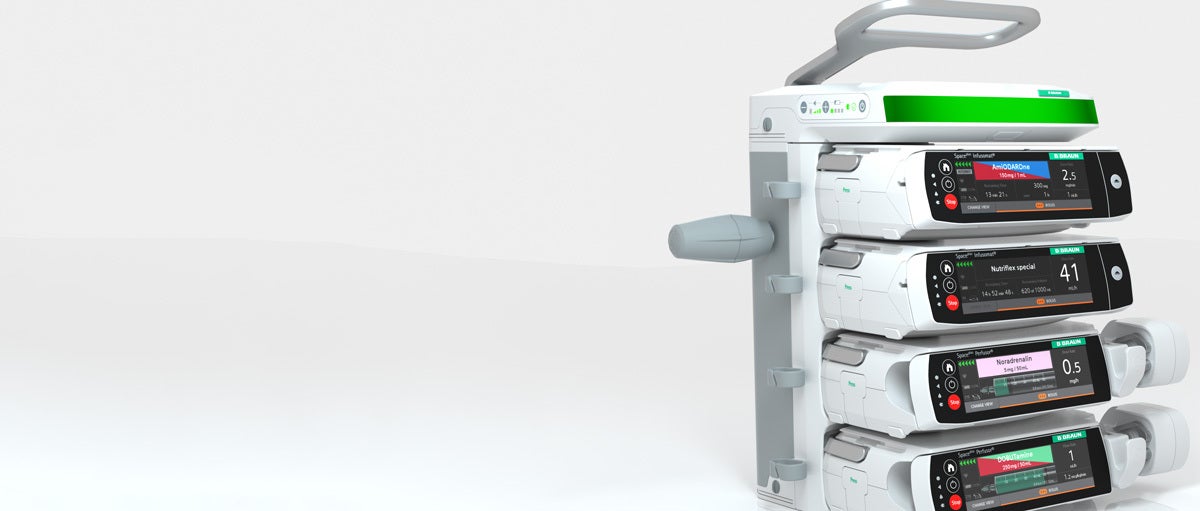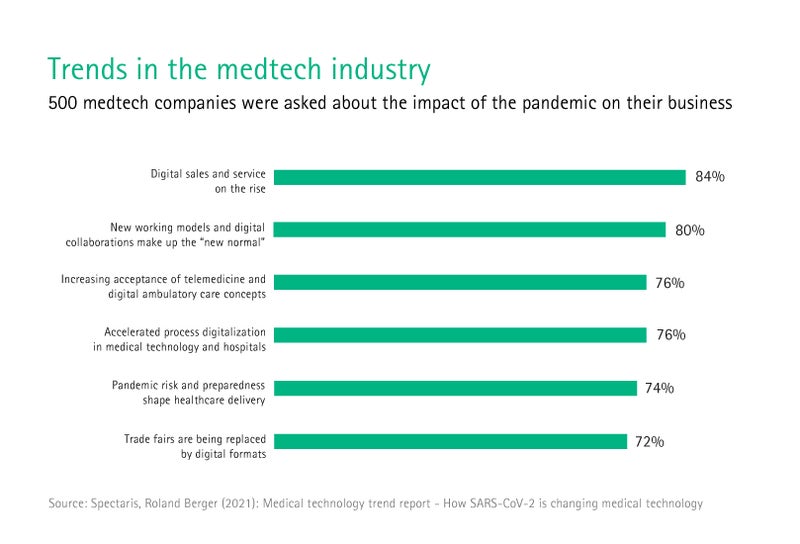Digital is the new normal
Digitalization is expanding into all areas of life. The health care system is no exception. For some time now, health care providers and the industry at large have been working on innovative digital solutions.
These solutions had to prove themselves under the difficult conditions of the pandemic—at the same time, digitalization of other areas of health care proceeded boldly, yet prudently. We at B. Braun also faced serious challenges. How can sales be made digital? What changes when training is consistently digitalized? And how can we efficiently work together remotely? We provide answers to these questions, and talk about significant tasks, creative ideas and new ways forward.
1. Close to the customer: sales
When Florian Golinelli talks about EinsteinVision, he practically gets carried away. The camera system by B. Braun is used for minimally invasive surgeries. With a special set of glasses, the surgeon sees a detailed, three-dimensional image of the inside of the body. “You can’t operate well if you can't see anything,” said Golinelli, who is responsible for surgical products at B. Braun France. Before an EinsteinVision system is used for the first time, B. Braun staff often spend several days with the OR team in order to explain the complex processes involved and to answer questions. The pandemic struck just after Golinelli’s team had installed an EinsteinVision system at the Clinique de Champagne medical clinic in Troyes for a test run and the hospital would no longer allow outside visitors. Together with the hospital, the B. Braun team decided to carry on with the training digitally - with success.
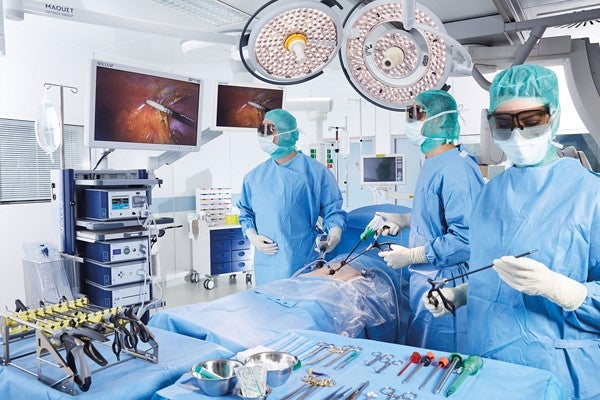
“The sales manager and the customer didn't meet once. “Before the pandemic, that would've been utterly unthinkable,” said Catherine Bidaut, who monitored the project for the Sales department. For her, this experience is just one of many examples of how digital tools improve the sales and consulting process. Where before great effort would have been taken to arrange an initial in-person meeting, now basic requirements can be explained via video conference and things can get moving sooner. And if technical questions arise during use, a service technician can quickly be contacted. The remove service is an addition to the current offering: “Our customers are also excited,” said Golinelli. However, the sales and consulting process for highly complex products cannot be 100 percent digitalized.
B. Braun uses a blended sales concept. “With this, we combine the best of both worlds: virtual and onsite,” said René Trinder, director of global sales management for basic care products. “Regular virtual meetings
and virtual prequalification on customer topics create more closeness despite the distance and provide the opportunity to design project cycles with our customers even more efficiently,” said Trinder. “Our customers also like the time they save.”
2. Conveying complexity: training
Another thing B. Braun is known for is providing scientific training, which is conducted all over the world through the Aesculap academies. Here, B. Braun experts introduce medical staff to the latest technology, and teach them about complex procedures and how to safely handle medical devices. Since 2018, The Aesculap Academy in China has been using apps and digital tools to supplement classroom training. “The digital switch was certainly a challenge for our employees and customers at first,” said Laffael Chen, head of the Aesculap academies in China.
That changed when the pandemic made holding classes at the training centers impossible. Almost overnight, the team had to find an alternative—and now, the digital groundwork paid off. The existing app proved itself to be a valuable platform for providing customers with the essential information despite lockdowns. Within a year, the number of registered users grew from 70,000 to over 400,000.
Since the scientific conferences, trade fairs and usual business appointments had halted around the world, the digital platform for the Aesculap academies became a real meeting place for the medical industries of several countries. “For us, our digital training programs were suddenly the only way to stay in touch with our customers,” said Tanja Bauer, who is responsible for the global business development of the 40 Aesculap academies worldwide.
The dynamics that unfold when employees are allowed to work on pragmatic solutions on their own initiative is also evident in the example of dialysis training. As the proper operation of high-tech dialysis machines is vital and complex, B. Braun provides training and certification to medical staff. Until 2020, the training courses were held strictly in person, but in order to maintain reliable treatment, an alternative had to be found quickly. “We told ourselves: Let’s just try it digitally,” said Manuel Stiel, who, with his team, is responsible for global technical training for Avitum and Hospital Care.
Together with his colleagues Katja Lehmann, Daniel Daude and Matthias Herres, he worked on an online training course, recorded video tutorials and continuously improved the learning experience over numerous test runs. “Aside from getting the proper equipment, it was really important to show the attendees that something like this was even possible online,” said Stiel. For that, they relied on an unusual proposal: “To our first customer, we said, ‘You only pay for the online training if you thought it was good’,” explained Stiel. The customer was thrilled by the way it was implemented. “We knew then at the latest that the training could also work digitally.”
That digital offerings can work when executed properly is something Christoph Storz, simulation and learning methods specialist at the Aesculap Academy, understands as well. He is working on a joint project with the University of Basel that converts CT and MRI scans into a 3D model in real time, which can be viewed through virtual reality glasses. “This method makes it possible to dive into the structure and look at it from every conceivable angle,” said Storz. With this type of visualization, the attendees at the Aesculap Academy can cut through complex medical issues in new ways. In one of the training courses offered, five patients are treated by the training physicians. Attendees learn not just through the lectures but also by examining the patients themselves with the virtual reality glasses. “Specialists who have been operating for decades using current methods are often skeptical when I talk about this new approach,” said Storz. “As soon as they put on the glasses, they don't want to take them off.”
3. Bridging distance online: work environment
Manufacturing innovative and reliable products that protect and improve the lives of patients around the world requires many gears to mesh and many experts to coordinate with one another. Until the pandemic happened, internal communication consisted of analog and digital components, of conferences, telephone calls, e-mails, databases and small talk in the break room. In the spring of 2020, B. Braun switched to remote mode in no time at all. What does a company do when suddenly it cannot make actual contact with almost anyone? How can information be shared quickly and effectively under these conditions? How are decisions made? And how can the employees working from home still feel like they belong?
How much things changed in just a year is especially apparent in the part of the company that, before the pandemic, had little involvement in topics like working from home and video conferences: production. “When the decision was made to move the production management to working remotely, we really weren't sure whether everything would be OK,” said Marc Riemenschneider, head of the pharmaceutical plant in Berlin, which produces glass and plastic vials of anesthetics such as propofol, which has been vital in the pandemic. This is because the manufacture of most B. Braun products is complex and includes hundreds of work steps. The plant was facing a double challenge: Production had to be ramped up to meet the sharp rise in demand while suddenly being managed remotely at the same time. “Beforehand, we finished the entire organization of the production, called shopfloor management, in in-person meetings on site,” said Frederike Traulsen, who runs production at the Berlin plant. “We've completely digitalized this process.” Instead of clarifying issues together on the whiteboard at the factory, they now meet via video conference on Microsoft Teams.
“Our employees personally and proactively shaped the processes so that managing remotely would work,” said Susanne Loge, who heads quality assurance for the Berlin location. “When it started working after just a few days, I thought to myself, ‘Wow’.”
The new technologies also help us bridge great distances. Almost no one knows that better than Allan Barr, who is B. Braun's clinical manager of abdominal and cardiothoracic surgery in the United Kingdom. The country was hit particularly hard by the pandemic, which is why nearly every hospital closed their doors to outside visitors. Together with his colleague Sam Miller, Barr began experimenting with a virtual reality application by software developer TeamViewer that looks through the camera of a communication partner and allows three-dimensional markers and drawings to be superimposed on the image. Technology with potential.
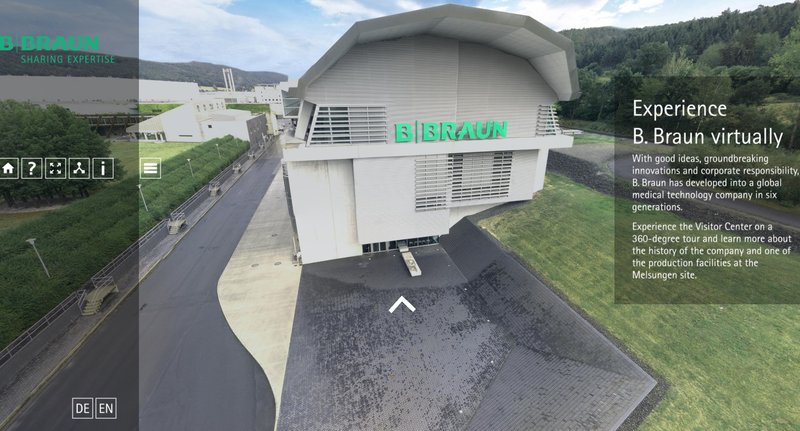

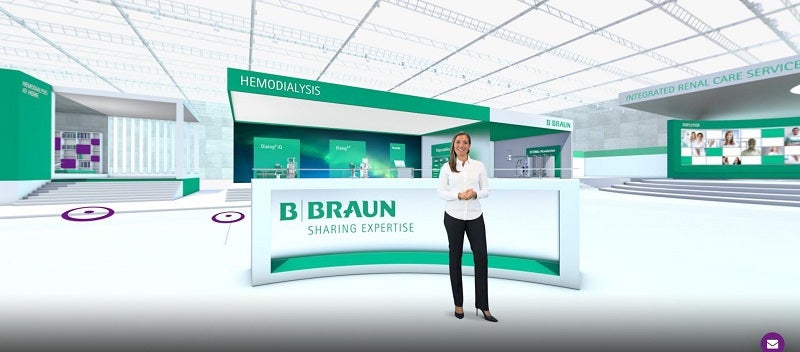







One evening, Barr received a call from an OR nurse reporting a problem with her B. Braun EinsteinVision 3D camera system, which is used for minimally invasive procedures. A patient was in the operating room, and a surgical procedure just about to start, but one of the monitors was malfunctioning. Barr was unable to identify the problem over the phone, as the feedback indicated that all connections were in place, so he had to improvise. Once the OR nurse had installed the TeamViewer app on her smartphone, Barr was able to peer over her shoulder as she checked the system again, almost as if he himself were in the room. The problem was found swiftly: All connections were in place, however an overstretched cable had been the cause of the display failure, and rectified under instruction fromBarr. "From our initial call to the problem being solved took twenty minutes. In normal circumstances, this would have required a physical visit to the OR, and certainly not until the next day, possibly later. A very simple remedy, but potentially significant consequences for the patient on the OR table, and also potentially the cancellation of a complex oncology procedure, scheduled for the following morning", explained Barr.
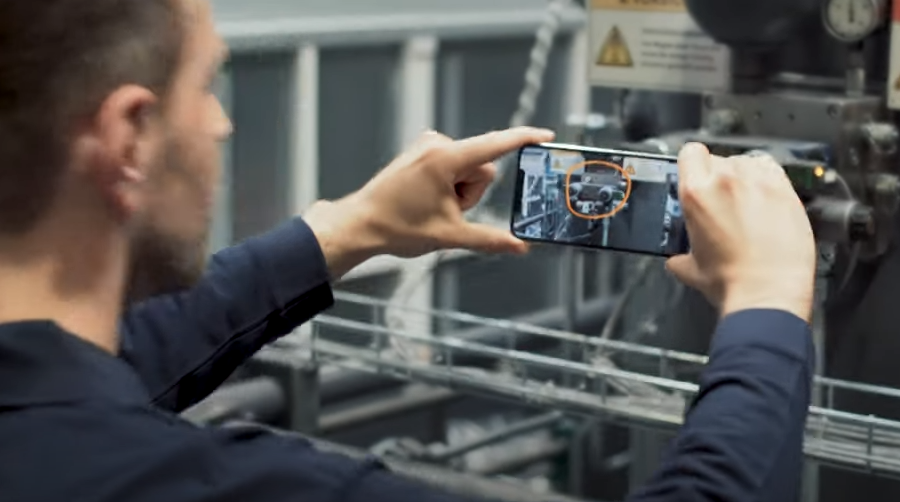
One year after the start of the pandemic, many things have become commonplace that would have sounded like science fiction a year prior. Remote diagnoses via virtual reality glasses. Remote management of factory production from a living room. Restlessness from going months without seeing colleagues and customers in person. “Digitalization sometimes also causes anxiety,” said Trinder. Throughout the company, however, teams are working together on turning inhibitions into opportunities, actively shaping the transformation, being flexible and trying things out. They then are often surprised themselves at how quickly how much can be changed if someone just does it. The past year has shown everyone: “B. Braun is ready.”


